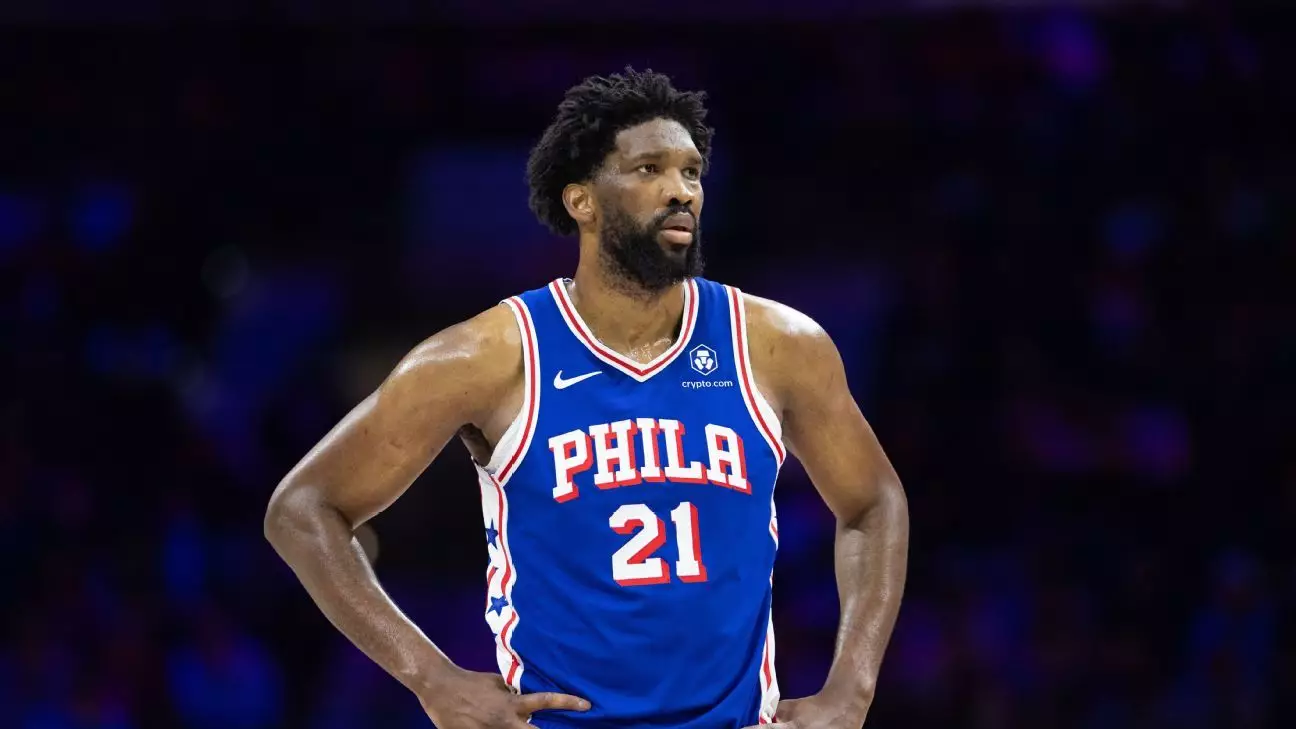The Philadelphia 76ers’ franchise has found itself embroiled in a whirlwind of injuries and adversity, pivotal to which is the future of star center Joel Embiid. Recently, it was confirmed that Embiid will undergo arthroscopic surgery on his persistent left knee issues, a decision that has caused ripples of concern throughout the league. The promise of a six-week recovery timeline offers a glimmer of hope, but it embodies the struggles that have often overshadowed his illustrious career. In the world of professional sports, few players have faced such a relentless battle against injuries as Embiid has. The ongoing saga illustrates not only the physical toll on the athlete but also the mental strain of being sidelined from the game he loves.
After a promising stretch leading to the 2023 MVP award, the current season has been anything but smooth for Embiid. He recorded a modest average of 23.8 points, a stark contrast to his peak performance of two consecutive seasons where he set a standard for excellence. The 76ers had high hopes of continuing their upward trajectory following last year’s solid playoff run, but instead, they find themselves navigating through the muck of disappointing performances, primarily attributed to injuries.
Embiid’s Internal Struggle
Embiid’s sentiment expressing frustration over his performance post-injury is emblematic of the emotional complexities athletes face. “The way I was playing a year ago is not the way I’m playing right now,” he stated after a brutal 124-104 loss to the Boston Celtics. This testimonial reveals much more than just a reflection on the court; it speaks to a deeper, almost existential struggle between personal expectation and physical limitation. It underscores an athlete’s innate desire to perform, juxtaposed against the reality of their body’s responses.
This internal conflict is magnified further given the heavyweight financial implications that accompany Embiid’s remaining four years and $200 million contract with the 76ers. There is an understood urgency for Embiid to not only recover but also to reclaim the dominant form that won him accolades and accolades. The dual objectives of individual recovery and team success have never felt so interconnected. The stakes are as high as ever for both Embiid and the organization.
The Domino Effect on the Team
Unfortunately for the 76ers, Embiid’s struggles mirror a broader narrative playing out within the organization. The acquisition of star forward Paul George has also turned into a cautionary tale, as injuries have muted his impact, with averages dipping to 16.2 points—a far cry from his former stellar output. Drawing parallels between the two players’ misfortunes reveals a team beset by a storm of injuries, showcasing how fragile the balance of success can be in professional sports.
Furthermore, guard Tyrese Maxey’s disappointing shooting percentages amplify the woes of Philadelphia. His career-low statistics contrast distinctly against his potential, and it’s indicative of how injuries can ripple through a team, affecting not just one or two players but the entire unit’s morale and performance. In a league that thrives on synergy and momentum, such disruptions are catastrophic.
The injuries extend beyond merely the stars, as evidenced by the loss of promising rookie Jared McCain to a torn meniscus, dampening the optimism that came with his early season performance. As the 76ers navigate a season defined by injuries, they simultaneously grapple with the urgency to reclaim a young and talented roster that shows promise but struggles to stay intact.
The Future: A Tentative Glimmer of Hope
Despite the bleak outlook at present, hope glimmers on the horizon for the 76ers. The possibility of retaining their first-round draft pick is crucial for rebuilding efforts. With a 65% chance of maintaining it, Philadelphia could fortify its roster with a potential game-changer, helping to reshape its future trajectory. The narrative now shifts not only to ensuring franchise cornerstones like Embiid return to full health but also to strategically utilize draft assets to revitalize a roster plagued with injuries.
As the franchise marches toward a tumultuous end to the regular season, the focus must shift to creating a well-rounded plan that safeguards against the unpredictability of injuries. Listening to medical professionals, investing in sports science, and exploring options within the draft can offer the 76ers more than just fleeting success—they may provide a pathway back to contention in the Eastern Conference.
In the face of adversity, the 76ers will need to channel resilience and hope, ensuring that Embiid’s upcoming surgery is the first step toward reclaiming not just individual glory but a collective resurgence within the franchise. After all, in sports, one injury-led season should not define a legacy; it can instead become a catalyst for rebirth.


Leave a Reply